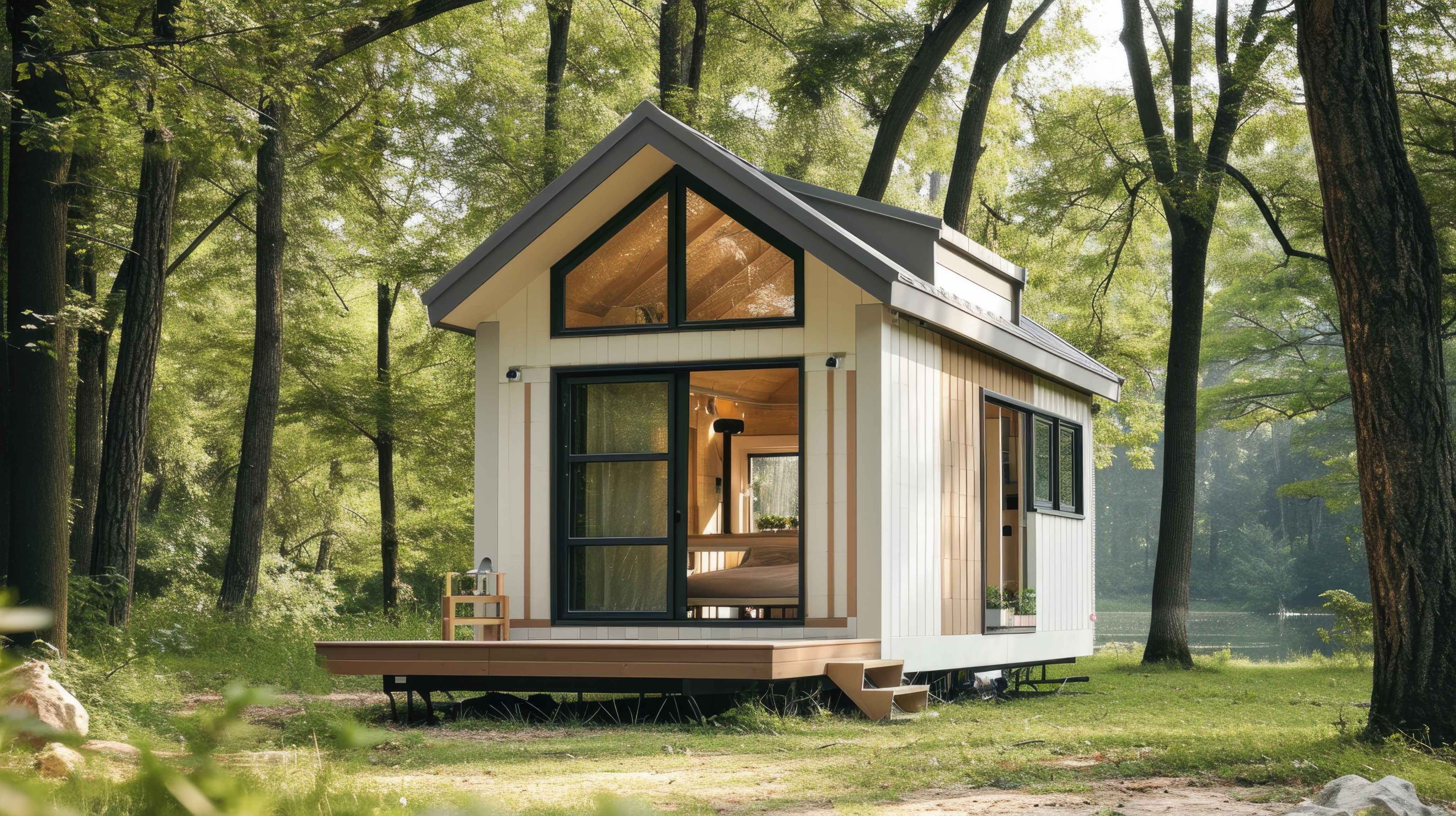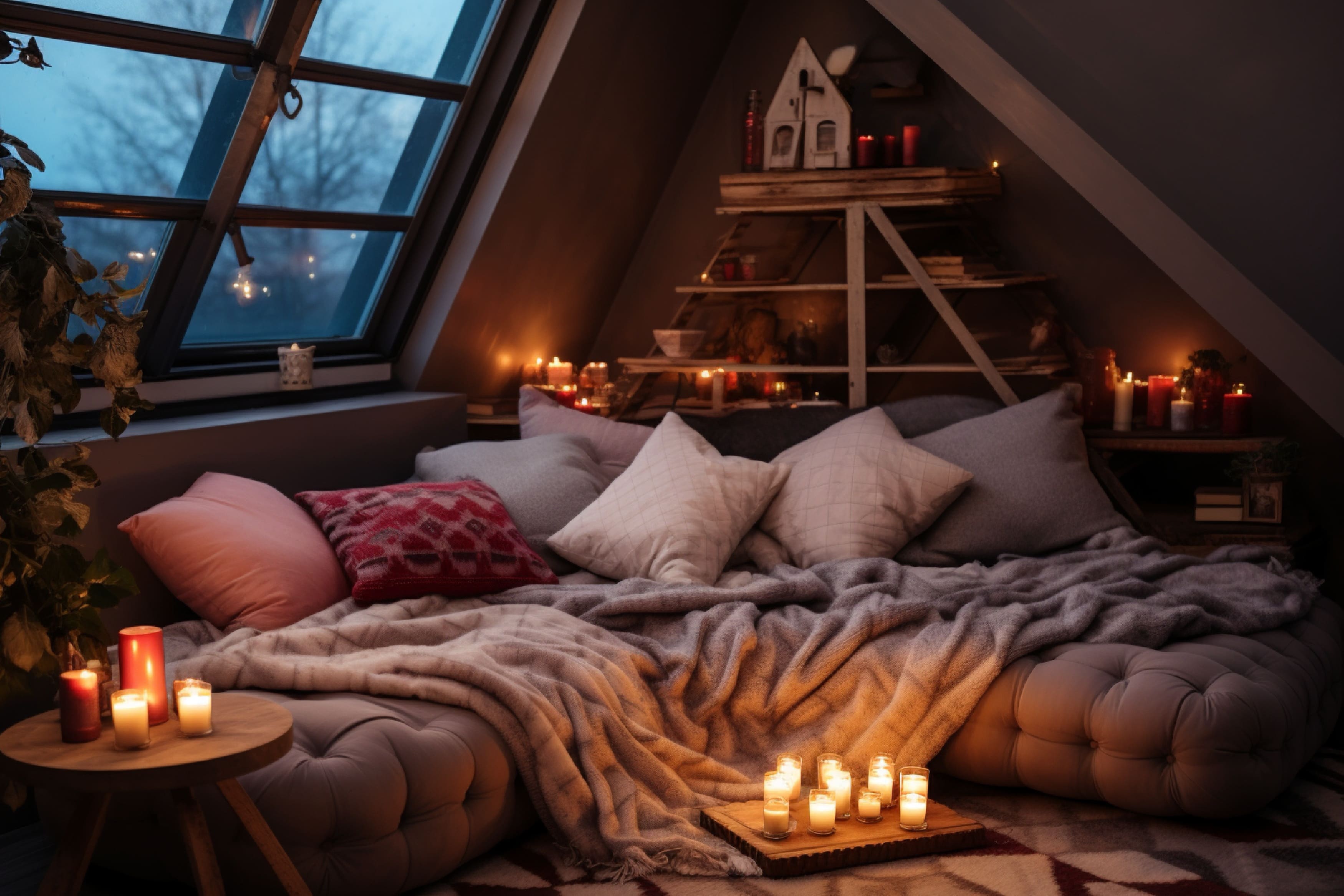Limited square footage doesn’t have to mean limited style.
People practice tiny living in a variety of ways, driven by different motivations. Some shy away from it, often due to a perception of it being overly restrictive, BUT IT DOESN’T HAVE TO BE. We firmly believe that a compact space doesn’t need to mean compromising on style!
“Tiny living” is a lifestyle characterized by residing in compact spaces, typically with an emphasis on minimalism, efficient use of space, and a focus on intentional living and sustainable design, which involves implementing environmentally conscious and resource efficient materials. It can take various forms, including tiny houses, micro-apartments, and other small living arrangements. Tiny living can be viewed as living with intention. Though it might come with its own set of challenges, instead of seeing it as a burden, we view it as an opportunity to get creative and showcase individuality within a space. Keep reading to find out more.
Lighting
Thoughtful illumination can transform any space, especially a tiny one. Lighting, whether natural or artificial, is a powerful asset, making confined areas feel larger and more welcoming. Here are some tips to make the most out of lighting in small spaces:
- Ensure that window treatments such as blinds or curtains, are easily moveable or openable. Opt for light colors to let sunlight in while preserving privacy.
- If feasible, consider installing skylights to introduce additional natural light, particularly in rooms with minimal wall space for windows.
- Wall sconces, recessed and pendant lighting are great because they provide ambient and task lighting but don’t take up any precious floor space or counter space
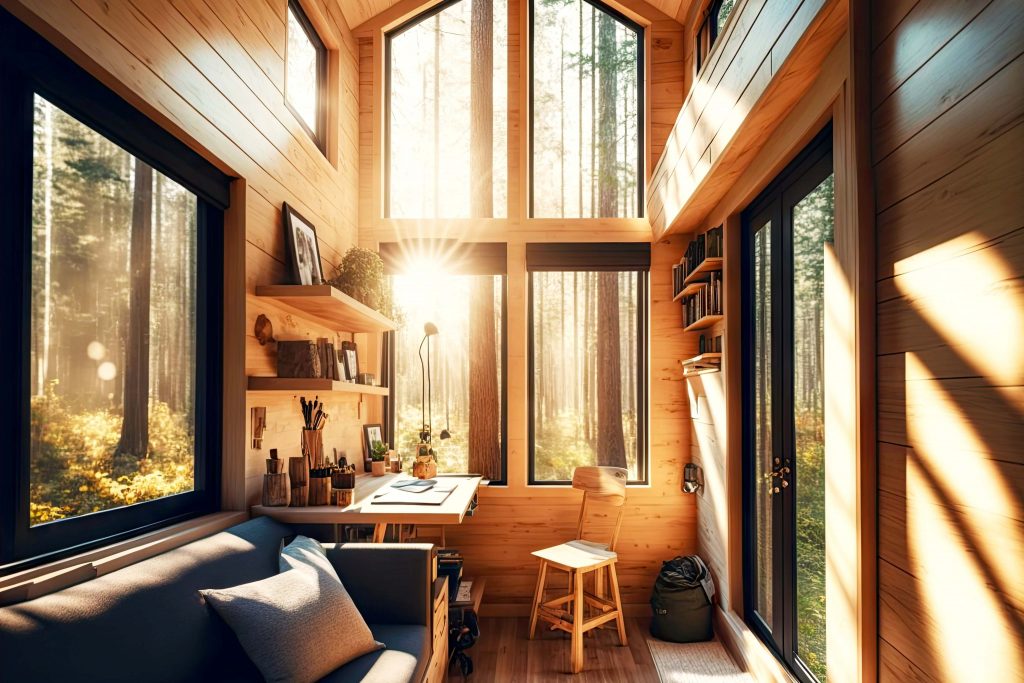
Greenery
Sustainable design can take many forms. From vertical planters to macramé hangers, there’s a garden style to suit every space! It’s a great way to bring a bit of the outdoors inside, and they’re perfect for any interior design style, whether bohemian to industrial, rustic, or another aesthetic.
Hanging gardens can add depth, texture, and visual appeal, making spaces all that more interesting. They serve as dynamic focal points that evolve over time, creating ever-changing backdrops. Vertical gardens may help absorb noise and create a peaceful oasis amidst urban life’s hustle and bustle and can shield windows from neighboring views.
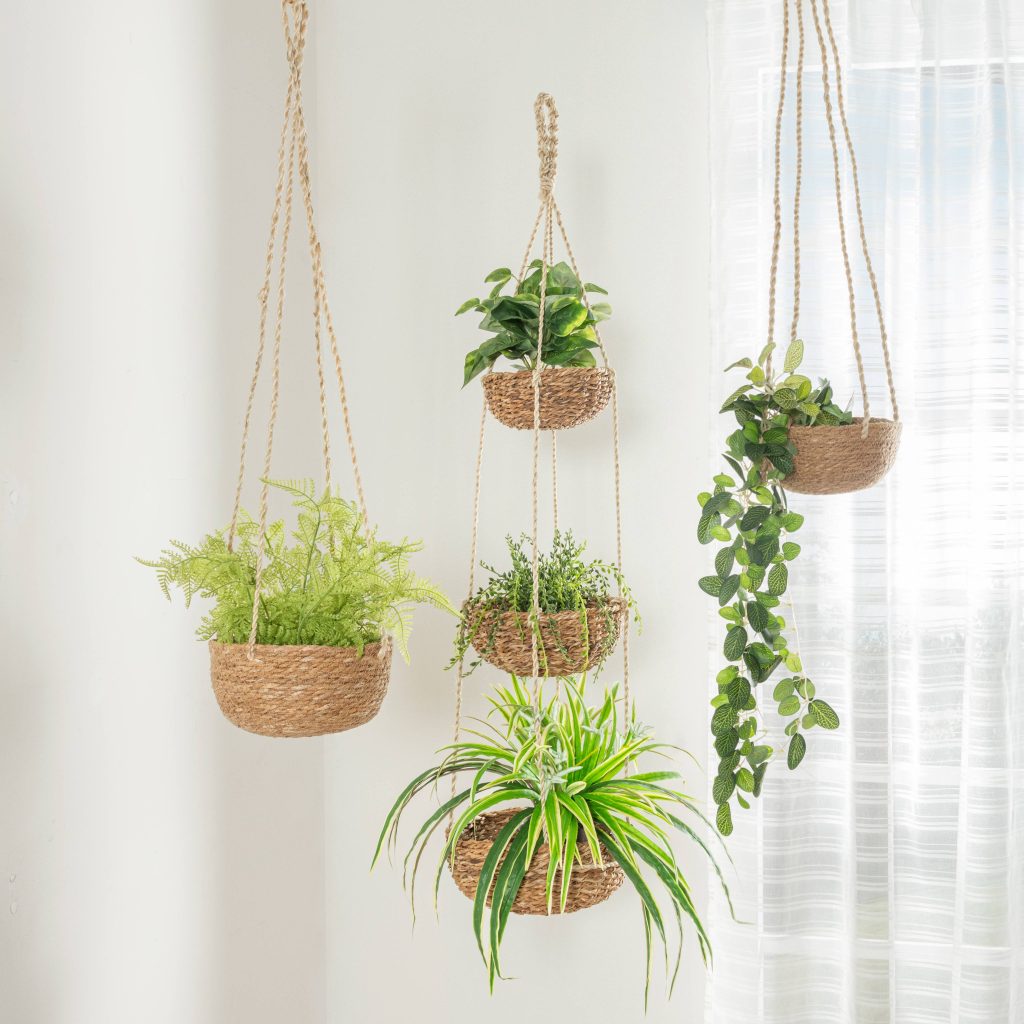
Optical Illusions
Mastering the art of optical illusions can be a game-changer. Consider mirrors, proportionate furniture, contrasting colors, and height illusions, your small-space superheroes.
Mirrors bounce light around, instantly brightening up a space and making it seem more spacious. In addition to ensuring your furniture isn’t bulky, choose pieces that have exposed legs as it creates a sense of openness by allowing light to pass through, visually expanding the floor area.
Contrasting colors add depth and personality into your space; the interplay of light and dark tones defines different zones within your space, making it feel dynamic. And don’t forget about height illusions! Strategic choices like floor-to-ceiling mirrors, or vertical artwork, draw the eye upward, which is great for a small space.
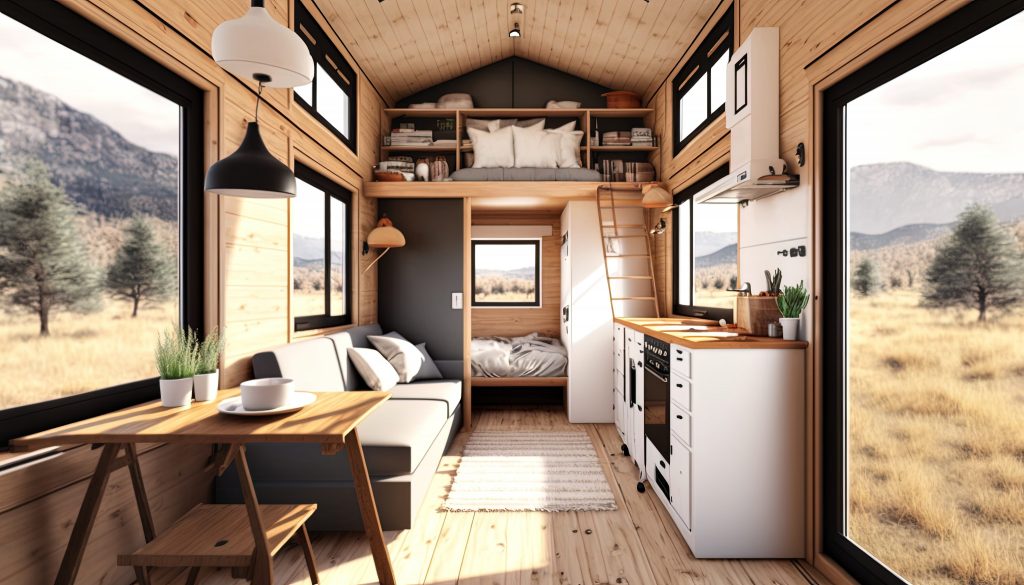
Small space design embodies the fusion of creativity, functionality, and sustainability. By mastering optical illusions, lighting, and embracing solutions like hanging gardens, we can turn small spaces into welcoming retreats that reflect our unique personalities and priorities. Through deliberate and sustainable design decisions, we not only optimize space but also nurture a stronger bond with our environment, creating spaces that are as visually appealing as they are environmentally friendly.




